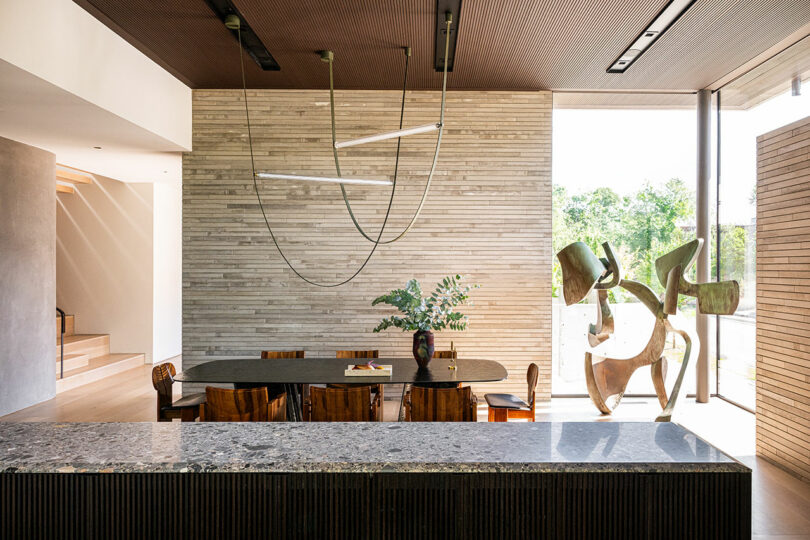smashingmagazine.com
Climate change is the single biggest health threat to humanity, accelerated by human activities such as the burning of fossil fuels, which generate greenhouse gases that trap the suns heat.The average temperature of the earths surface is now 1.2C warmer than it was in the late 1800s, and projected to more than double by the end of the century. The consequences of climate change include intense droughts, water shortages, severe fires, melting polar ice, catastrophic storms, and declining biodiversity. The Internet Is A Significant Part Of The ProblemShockingly, the internet is responsible for higher global greenhouse emissions than the aviation industry, and is projected to be responsible for 14% of all global greenhouse gas emissions by 2040.If the internet were a country, it would be the 4th largest polluter in the world and represents the largest coal-powered machine on the planet.But how can something digital like the internet produce harmful emissions?Internet emissions come from powering the infrastructure that drives the internet, such as the vast data centres and data transmission networks that consume huge amounts of electricity.Internet emissions also come from the global manufacturing, distribution, and usage of the estimated 30.5 billion devices (phones, laptops, etc.) that we use to access the internet.Unsurprisingly, internet related emissions are increasing, given that 60% of the worlds population spend, on average, 40% of their waking hours online.We Must Urgently Reduce The Environmental Impact Of The InternetAs responsible digital professionals, we must act quickly to minimise the environmental impact of our work. It is encouraging to see the UK government encourage action by adding Minimise environmental impact to their best practice design principles, but there is still too much talking and not enough corrective action taking place within our industry.The reality of many tightly constrained, fast-paced, and commercially driven web projects is that minimising environmental impact is far from the agenda.So how can we make the environment more of a priority and talk about it in ways that stakeholders will listen to?A eureka moment on a recent web optimisation project gave me an idea.My Eureka MomentI led a project to optimise the mobile performance of www.talktofrank.com, a government drug advice website that aims to keep everyone safe from harm.Mobile performance is critically important for the success of this service to ensure that users with older mobile devices and those using slower network connections can still access the information they need.Our work to minimise page weights focused on purely technical changes that our developer made following recommendations from tools such as Google Lighthouse that reduced the size of the webpages of a key user journey by up to 80%. This resulted in pages downloading up to 30% faster and the carbon footprint of the journey being reduced by 80%.We hadnt set out to reduce the carbon footprint, but seeing these results led to my eureka moment. I realised that by minimising page weights, you improve performance (which is a win for users and service owners) and also consume less energy (due to needing to transfer and store less data), creating additional benefits for the planet so everyone wins.This felt like a breakthrough because business, user, and environmental requirements are often at odds with one another. By focussing on minimising websites to be as simple, lightweight and easy to use as possible you get benefits that extend beyond the triple bottom line of people, planet and profit to include performance and purpose.So why is minimising such a great digital sustainability strategy?ProfitWebsite providers win because their website becomes more efficient and more likely to meet its intended outcomes, and a lighter site should also lead to lower hosting bills.PeoplePeople win because they get to use a website that downloads faster, is quick and easy to use because it's been intentionally designed to be as simple as possible, enabling them to complete their tasks with the minimum amount of effort and mental energy.PerformanceLightweight webpages download faster so perform better for users, particularly those on older devices and on slower network connections. PlanetThe planet wins because the amount of energy (and associated emissions) that is required to deliver the website is reduced.PurposeWe know that we do our best work when we feel a sense of purpose. It is hugely gratifying as a digital professional to know that our work is doing good in the world and contributing to making things better for people and the environment.In order to prioritise the environment, we need to be able to speak confidently in a language that will resonate with the business and ensure that any investment in time and resources yields the widest range of benefits possible.So even if you feel that the environment is a very low priority on your projects, focusing on minimising page weights to improve performance (which is generally high on the agenda) presents the perfect trojan horse for an environmental agenda (should you need one).Doing the right thing isnt always easy, but weve done it before when managing to prioritise issues such as usability, accessibility, and inclusion on digital projects. Many of the things that make websites easier to use, more accessible, and more effective also help to minimise their environmental impact, so the things you need to do will feel familiar and achievable, so dont worry about it all being another new thing to learn about!So this all makes sense in theory, but whats the master plan to use when putting it into practice?The MasterplanThe masterplan for creating websites that have minimal environmental impact is to focus on offering the maximum value from the minimum input of energy.Its an adaptation of Buckminister Fullers Dymaxion principle, which is one of his many progressive and groundbreaking sustainability strategies for living and surviving on a planet with finite resources.Inputs of energy include both the electrical energy that is required to operate websites and also the mental energy that is required to use them. You can achieve this by minimising websites to their core content, features, and functionality, ensuring that everything can be justified from the perspective of meeting a business or user need. This means that anything that isnt adding a proportional amount of value to the amount of energy it requires to provide it should be removed.So thats the masterplan, but how do you put it into practice?Decarbonise Your Highest Value User JourneysIve developed a new approach called Decarbonising User Journeys that will help you to minimise the environmental impact of your website and maximise its performance.Note: The approach deliberately focuses on optimising key user journeys and not entire websites to keep things manageable and to make it easier to get started. The secret here is to start small, demonstrate improvements, and then scale.The approach consists of five simple steps:Identify your highest value user journey,Benchmark your user journey,Set targets,Decarbonise your user journey,Track and share your progress.Heres how it works.Step 1: Identify Your Highest Value User JourneyYour highest value user journey might be the one that your users value the most, the one that brings you the highest revenue, or the one that is fundamental to the success of your organisation. You could also focus on a user journey that you know is performing particularly badly and has the potential to deliver significant business and user benefits if improved.You may have lots of important user journeys, and its fine to decarbonise multiple journeys in parallel if you have the resources, but Id recommend starting with one first to keep things simple.To bring this to life, lets consider a hypothetical example of a premiership football club trying to decarbonise its online ticket-buying journey that receives high levels of traffic and is responsible for a significant proportion of its weekly income.Step 2: Benchmark Your User JourneyOnce youve selected your user journey, you need to benchmark it in terms of how well it meets user needs, the value it offers your organisation, and its carbon footprint. It is vital that you understand the job it needs to do and how well it is doing it before you start to decarbonise it. There is no point in removing elements of the journey in an effort to reduce its carbon footprint, for example, if you compromise its ability to meet a key user or business need.You can benchmark how well your user journey is meeting user needs by conducting user research alongside analysing existing customer feedback. Interviews with business stakeholders will help you to understand the value that your journey is providing the organisation and how well business needs are being met.You can benchmark the carbon footprint and performance of your user journey using online tools such as Cardamon, Ecograder, Website Carbon Calculator, Google Lighthouse, and Bioscore. Make sure you have your analytics data to hand to help get the most accurate estimate of your footprint.To use these tools, simply add the URL of each page of your journey, and they will give you a range of information such as page weight, energy rating, and carbon emissions. Google Lighthouse works slightly differently via a browser plugin and generates a really useful and detailed performance report as opposed to giving you a carbon rating. A great way to bring your benchmarking scores to life is to visualise them in a similar way to how you would present a customer journey map or service blueprint. This example focuses on just communicating the carbon footprint of the user journey, but you can also add more swimlanes to communicate how well the journey is performing from a user and business perspective, too, adding user pain points, quotes, and business metrics where appropriate. Ive found that adding the energy efficiency ratings is really effective because its an approach that people recognise from their household appliances. This adds a useful context to just showing the weights (such as grams or kilograms) of CO2, which are generally meaningless to people.Within my benchmarking reports, I also add a set of benchmarking data for every page within the user journey. This gives your stakeholders a more detailed breakdown and a simple summary alongside a snapshot of the benchmarked page.Your benchmarking activities will give you a really clear picture of where remedial work is required from an environmental, user, and business point of view. In our football user journey example, its clear that the News and Tickets pages need some attention to reduce their carbon footprint, so they would be a sensible priority for decarbonising.Step 3: Set TargetsUse your benchmarking results to help you set targets to aim for, such as a carbon budget, energy efficiency, maximum page weight, and minimum Google Lighthouse performance targets for each individual page, in addition to your existing UX metrics and business KPIs. There is no right or wrong way to set targets. Choose what you think feels achievable and viable for your business, and youll only learn how reasonable and achievable they are when you begin to decarbonise your user journeys.Setting targets is important because it gives you something to aim for and keeps you focused and accountable. The quantitative nature of this work is great because it gives you the ability to quickly demonstrate the positive impact of your work, making it easier to justify the time and resources you are dedicating to it.Step 4: Decarbonise Your User JourneyYour objective now is to decarbonise your user journey by minimising page weights, improving your Lighthouse performance rating, and minimising pages so that they meet both user and business needs in the most efficient, simple, and effective way possible.Its up to you how you approach this depending on the resources and skills that you have, you can focus on specific pages or addressing a specific problem area such as heavyweight images or videos across the entire user journey.Heres a list of activities that will all help to reduce the carbon footprint of your user journey:Work through the recommendations in the diagnostics section of your Google Lighthouse report to help optimise page performance.Switch to a green hosting provider if you are not already using one. Use the Green Web Directory to help you choose one.Work through the W3C Web Sustainability Guidelines, implementing the most relevant guidelines to your specific user journey.Remove anything that is not adding any user or business value.Reduce the amount of information on your webpages to make them easier to read and less overwhelming for people.Replace content with a lighter-weight alternative (such as swapping a video for text) if the lighter-weight alternative provides the same value.Optimise assets such as photos, videos, and code to reduce file sizes.Remove any barriers to accessing your website and any distractions that are getting in the way.Re-use familiar components and design patterns to make your websites quicker and easier to use. Write simply and clearly in plain English to help people get the most value from your website and to help them avoid making mistakes that waste time and energy to resolve.Fix any usability issues you identified during your benchmarking to ensure that your website is as easy to use and useful as possible.Ensure your user journey is as accessible as possible so the widest possible audience can benefit from using it, offsetting the environmental cost of providing the website.Step 5: Track And Share Your ProgressAs you decarbonise your user journeys, use the benchmarking tools from step 2 to track your progress against the targets you set in step 3 and share your progress as part of your wider sustainability reporting initiatives.All being well at this point, you will have the numbers to demonstrate how the performance of your user journey has improved and also how you have managed to reduce its carbon footprint. Share these results with the business as soon as you have them to help you secure the resources to continue the work and initiate similar work on other high-value user journeys.You should also start to communicate your progress with your users.Its important that they are made aware of the carbon footprint of their digital activity and empowered to make informed choices about the environmental impact of the websites that they use. Ideally, every website should communicate the emissions generated from viewing their pages to help people make these informed choices and also to encourage website providers to minimise their emissions if they are being displayed publicly. Often, people will have no choice but to use a specific website to complete a specific task, so it is the responsibility of the website provider to ensure the environmental impact of using their website is as small as possible.You can also help to raise awareness of the environmental impact of websites and what you are doing to minimise your own impact by publishing a digital sustainability statement, such as Unilevers, as shown below. A good digital sustainability statement should acknowledge the environmental impact of your website, what you have done to reduce it, and what you plan to do next to minimise it further.As an industry, we should normalise publishing digital sustainability statements in the same way that accessibility statements have become a standard addition to website footers.Useful Decarbonising PrinciplesKeep these principles in mind to help you decarbonise your user journeys:More doing and less talking.Start decarbonising your user journeys as soon as possible to accelerate your learning and positive change.Start small.Starting small by decarbonising an individual journey makes it easier to get started and generates results to demonstrate value faster.Aim to do more with less.Minimise what you offer to ensure you are providing the maximum amount of value for the energy you are consuming.Make your website as useful and as easy to use as possible.Useful websites can justify the energy they consume to provide them, ensuring they are net positive in terms of doing more good than harm.Focus on progress over perfection.Websites are never finished or perfect but they can always be improved, every small improvement you make will make a difference.Start Decarbonising Your User Journeys TodayDecarbonising user journeys shouldnt be done as a one-off, reserved for the next time that you decide to redesign or replatform your website; it should happen on a continual basis as part of your broader digital sustainability strategy.We know that websites are never finished and that the best websites continually improve as both user and business needs change. Id like to encourage people to adopt the same mindset when it comes to minimising the environmental impact of their websites.Decarbonising will happen most effectively when digital professionals challenge themselves on a daily basis to minimise the things they are working on.This avoids building carbon debt that consists of compounding technical and design debt within our websites, which is always harder to retrospectively remove than avoid in the first place.By taking a pragmatic approach, such as optimising high-value user journeys and aligning with business metrics such as performance, we stand the best possible chance of making digital sustainability a priority. Youll have noticed that, other than using website carbon calculator tools, this approach doesnt require any skills that dont already exist within typical digital teams today. This is great because it means youve already got the skills that you need to do this important work.I would encourage everyone to raise the issue of the environmental impact of the internet in their next team meeting and to try this decarbonising approach to create better outcomes for people, profit, performance, purpose, and the planet.Good luck!










